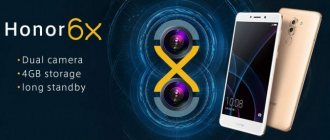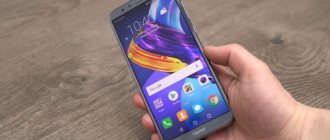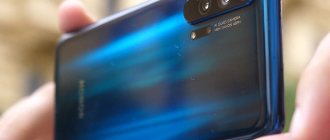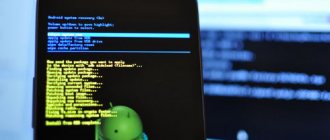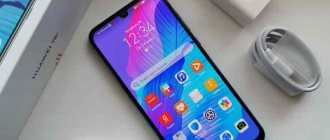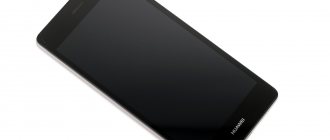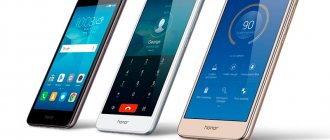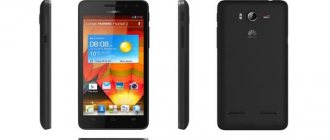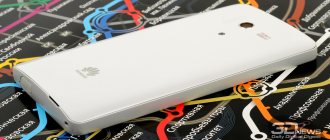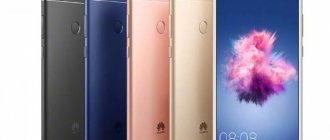Huawei P20 and P20 Pro test: did someone say "iPhone X"?
With the iPhone X design, Apple appears to have touched a nerve and ignited a passion for imitation among Chinese and Taiwanese manufacturers. Otherwise, there is nothing to explain the fact that the Far Eastern iPhone X clones, in which you can see notches on the screens almost everywhere, are sometimes wider and sometimes narrower.
Now, with the P20 and P20 Pro models, such an industry giant as Huawei, which has established itself in the Western market as a premium manufacturer, is jumping on the same train. She presented two very good Android smartphones with clear reminiscences of the iPhone X. But, unlike the device with the Apple logo, the fingerprint scanner is located under the display.
We find that Huawei has already proven with last year's Mate 10 Pro that it has its own character, but nevertheless the P20 and P20 Pro are gorgeous and above all stand out for their excellent workmanship. The devices lie in the hand as comfortably as possible and do not have any interfering gaps.
Meanwhile, it couldn’t do without the annoying Apple-style notch
Design
Okay, maybe Apple doesn’t dictate fashion, although... Of course, it does. A huge number of full-screen smartphones with a cutout at the top of the display have already been presented, released and will be announced. As if confirming this, the first beta of Android P introduced native support for “ten-like” smartphones. If Apple has this “unibrow” that maintains the same thickness of the frame around the entire perimeter and accommodates a huge number of sensors for Face ID, then others have neither one nor the other.
The P20 was no exception. There is a small cutout on top where the camera and speaker fit. The bottom frame is noticeably thicker than the others - a touch button with a fingerprint scanner was shoved here. It supports gestures, for example, one tap is “back”, a long press is to open the desktop, and swiping left or right is for multitasking. Convenient, although it's time to move to the on-screen navigation bar and free up space to increase the screen or reduce the size. The scanner is traditionally fast, now in general this is the case with all smartphones - the speed of finger unlocking has reached a psychological ceiling and can no longer surprise. It just works. In addition to your finger, you can also use your face. Not Face ID, of course, but it works on par with the OnePlus 5T.
If there are quibbles with the cutout above the screen, the rest of the P20's design is in perfect order. Oh, what a color! A glossy gradient flowing from purple to green. A very bold decision, considering the selection of unconventional colors, and this makes it even cooler. Where did you see this? Nowhere. But Huawei did it! There are also black, midnight blue, rose gold and champagne gold versions (this one is only for P20), but the last two will not be sold in Russia. The colors were created under license from Pantone, and these are the most authoritative developers and manufacturers of solutions in the field of colors.
The body is made of metal and glass, but it looks VERY fresh. *Damn, what a color!* On the bottom are the speakers, microphone and Type-C, on the right are the power and volume buttons. At the top and bottom ends there are a pair of antenna separators, where would we be without them. Another important point is that the smartphone is protected from water and dust according to the IP67 standard. Stereo speakers add to the benefits of the Pro version. Huawei developed them together with Dolby. They sound amazing: loud and clear. The regular version has one speaker, but it doesn't sound much worse.
Huawei P20 (Pro) test: good display quality
Huawei does not make a very strict bet on the cutout at the top of the screen, like Apple, since the manufacturer allows users to hide it in the display settings: if desired, the system paints the top stripes black so that they merge with the notch into one whole. Let us recall that in the so-called The Notch area houses the sensors, speaker and front camera.
The hide notch feature works a little better on the Huawei P20 Pro as it has an OLED screen with more stable viewing angles and better blacks. The regular P20 is equipped with an LC display - here, if you look closely, you can see a bluish tint to the black color, so the trick with the disappearance of the notch does not look so convincing. If bright sunlight hits the screen, the difference between Notch and the black line of the display is clearly visible. We also like that the system automatically hides the notch when displaying photos and videos.
Bright and powerful: displays deliver outstanding performance
Screen
But what there are no questions about at all is the screen. The large 6.1-inch OLED display is good. It is bright, perfectly balanced in colors, in the settings you can turn on the normal mode and mute the flashy colors, making them calmer. There is another borrowing from the iPhone - True Tone technology. Here it is called “Natural Colors”. It automatically adjusts the balance depending on the lighting. The display does not fade, does not invert, and is readable in bright sunlight. This is a great screen, worthy of a flagship. In the display settings there is a “Controller” item and it allows you to programmatically hide the notch in the screen, or rather disguise it. In this mode, the smartphone looks a little better.
P20 (Pro) is large and suitable for sunny weather
Huawei P20 Pro with a 6.1-inch diagonal is slightly larger in size than the regular Huawei P20, which, with its 5.8 inches, also cannot be called a baby. Both screens display content with a resolution of 2240x1080 pixels. With a widescreen aspect ratio of 18.7:9, this equates to an enhanced Full-HD resolution. The level of detail is excellent - a higher resolution would probably only be needed when using VR glasses.
We also really liked the maximum brightness of both devices: if strong sunlight falls on the screen, then the P20 Pro begins to glow more strongly - the indicators increase to 621 cd/m2. The P20 achieves an even higher 653 cd/m2, ranking among the top results in our respective rankings. Thus, even in bright sunshine, the devices remain perfectly readable.
The smaller-screen P20, in our measurements, has slightly less glare than the P20 Pro and looks a little cleaner in sunlight - but that's only when you look at the screen perpendicular to its surface. This is because the P20, unlike the P20 Pro, is equipped with an LC display, which significantly loses contrast when changing viewing angles. In manual mode indoors, the screen brightness can be increased to almost 400 cd/m2 - photos and videos look brilliant.
P20 sets a brightness record. Direct sunlight is not a problem
Design and appearance
Returning to the color, it is worth noting that not everyone may like the color, but it looks impressive, fresh and maybe even a little frivolous. But the colors in the Twilight gradient are nice and even stylish. The back cover is glass, but due to the fact that there is a void under it approximately in the center of the device, it feels like it is plastic. And this beautiful “Twilight” color becomes stained so quickly that you can only appreciate its beauty in the first few seconds. In general, this smartphone definitely needs a case, including so that it does not wobble on the table. By the way, the kit includes a simple case for the first time.
Huawei P20 Pro is a fairly large smartphone. It has a 6.1-inch display and if you need something more compact, then it's better to take a closer look at the P20. The smartphone is heavy, tactilely pleasant, and the ergonomics of the elements here are quite standard: the power button and volume rocker are on the right side, the tray for two SIM cards without a memory card slot is on the left. At the top end there is a noise reduction microphone and an infrared port, at the bottom there is a Type-C connector, a microphone and a speaker. There is a triple camera on the back, and on the front there is a touch-sensitive Home button with a fingerprint scanner. The monobrow houses sensors, a front camera and a round earpiece that acts as a second stereo speaker.
P20 Pro camera: three-lens system test
The P20 Pro has three cameras on the back, which offer some interesting features for fast photography enthusiasts. As the main camera, the Chinese manufacturer uses, as Nokia once did in its Pureview 808 and Lumia 1020, a matrix with an extreme 40-megapixel resolution. But at the same time, Huawei is integrating a smaller sensor here than Nokia: in the P20 Pro it measures 1:1.7 inches, while the bulkier Pureview with 1:1.2 inches offers a much larger sensor area.
To improve image quality especially in twilight, the system takes a 10-megapixel image as standard, thus combining information from 4 points into one pixel of the final image. Huawei calls it Light Fusion, but usually people talk about oversampling in this case. The process improves light sensitivity and reduces noise levels. One pixel in a certain sense turns out to be large - 2 microns. Typically, mobile phone cameras boast 1.2-1.4 microns.
Three lenses make the camera very flexible for those who love quick photos
The main camera is supported by a 20 megapixel monochrome matrix - its lens is located directly above the LED flash on the back of the smartphone. This sensor, due to the absence of an RGB filter, is more photosensitive and should improve rendering in twilight shooting scenarios. Alternatively, it allows you to get extremely clear black and white photos without any filter tricks.
Under the topmost of the trio of lenses is an 8 MP telephoto sensor, which shoots at 3x magnification. The higher level of detail compared to enlarged standard shots is very noticeable. The dual-lens systems of other smartphones such as the iPhone X or Galaxy S9 Plus offer “only” 2x zoom. This way, you can shoot more distant subjects with the P20 Pro.
The size of the f/1.8 lens hood for the main camera is decent. The monochrome sensor, thanks to its larger aperture, f/1.6, receives more light, and the telephoto lens with an f/2.4 hood receives a little less.
Illustration: Chip.de
⇡#Camera
Huawei had to set a record in something - without this, the new devices, despite their high status within the Chinese brand’s lineup, would have a hard time competing with other flagships. Still, P-series smartphones used to be noticeably cheaper than the flagships of Apple, Samsung or Sony, but now they play in approximately the same price category. And this record is, of course, the number of rear cameras. There are three of them here.
The first consists of an RGB sensor with physical dimensions of 1/1.7″ and a resolution of 40 megapixels – this is a record among current smartphones for both indicators. Only Nokia five years ago (Lumia 1050 with a 1/1.5″ sensor) could boast of something similar. However, this is not a “real” 40 megapixels - in fact, it is a 10 megapixel “Bayer” sensor with clever subpixel grouping and, probably, double exposure for each frame (and not just for those marked by the application as HDR). The resulting result exceeds in color resolution what can be obtained from a “regular” 10-megapixel sensor, but, naturally, is inferior to what a “real” 40-megapixel sensor produces (like the Sony 7R III camera, for example).
| On the left is an image with a resolution of 10 megapixels, on the right is 40 megapixels, below are enlarged fragments of images | ||
By default, the P20 Pro shoots at 10 megapixels (3648 x 2736), but you can also activate 40 megapixels (7296 x 5472) if you wish. Examples above - it’s easy to notice that with a fourfold difference in resolution, the difference in detail is not at all as striking as it could be. Or even not visible at all.
This camera is equipped with a lens with an equivalent focal length of 27 mm and an aperture of ƒ/1.8 - far from today's records, but not bad at all. But the second camera, with a 20 megapixel monochrome sensor (physical dimensions - 1/2.7″) is already equipped with optics with an ƒ/1.6 aperture. And this is much more important, since it is she who is responsible for the most part for catching light in poor lighting.
| Examples of shooting with a wide angle, 3x and 5x zoom | ||||
The third camera is solely responsible for zoom – it is an auxiliary 8-megapixel module measuring 1/4″, the lens of which has an equivalent focal length of 80 mm and an aperture of ƒ/2.4. It allows you to count on a full 3x optical zoom with a maximum resolution of 10 megapixels and a hybrid (with software “fine-tuning” of the image) 5x zoom. In short, this is the best solution of this kind that exists today in the world of mobile cameras, and even by a large margin from the rest. Examples of pictures using zoom can be seen above.
| Examples of shooting with a wide angle, 3x, 5x, 10x zoom | ||||
You can also activate 10x zoom - in this case, the loss in quality will be obvious, but it is quite possible to shoot in this mode.
The camera works with an optical stabilization system - also one of the most effective among solutions of this kind. Huawei's words about 6 axes of stabilization, alas, look like just another marketing technique, and not the smartest one, but they do not affect the camera's capabilities - I was able to take a sharp image handheld with a shutter speed of up to 1/6 (in this case, however, I had to use my elbows rest against something). For a smartphone this is top class. Given its high aperture and the use of a monochrome sensor, which allows you to get more detail in low light and expand the dynamic range of the final image, the P20 Pro can easily be considered a leader in terms of low-light shooting.
An example of shooting with a multi-frame exposure and a “four-second” shutter speed
Especially if you shoot some static scenes and activate the multi-frame exposure mode - in this case, a shutter speed of 4 seconds will even be written in EXIF. This is factually a lie, but the user should not worry about this - the picture looks amazing.
The camera uses hybrid autofocus - the phase method is combined here with contrast when using a laser rangefinder. There are no complaints about the focusing system.
| Huawei P20 Pro, camera app interface | ||
The interface of the camera application is the same as that of the Mate 10 Pro: the fonts are in place, and different menus can be called up by swiping sideways on the screen, and special color schemes (bright, normal and faded).
An important point regarding the “intelligent” capabilities of the camera is that it constantly tries to determine the situation or object in the frame (from a pet to weather conditions) and adapt the settings for the highest quality shooting at that moment. The P20 Pro detects objects really vigorously, but with the settings everything is not always great - the software turns cats, already cute, into some completely radically smoothed out “cutes”. The same thing happens when shooting regular portraits, and in general - a person in this regard is still smarter than a machine, and the P20 Pro has a mode with manual settings, a virtual horizon (why is it not available in standard mode?) and the ability to shoot in RAW format. So, here you can turn off this overly annoying AI - while in the Mate 10 Pro this could not be done. Let's rejoice.
| Left – picture without HDR, right – with activated HDR | ||
HDR mode is not activated by default, it must be turned on separately, and this is logical - the P20 Pro camera has an excellent dynamic range reserve, constant use of HDR is not necessary.
What’s relatively new is the software system for “light placement” when shooting a portrait - it’s not always appropriate and looks more like a kind of toy and entertainment rather than a real tool, but why not. This system works with both the main module and the front one. Naturally, there is also a traditional software background blur mode with the ability to change the “aperture” after the fact in a virtual range from ƒ/0.95 to ƒ/16.
You can also activate black and white shooting - it’s worth saying that the image processing algorithms are well tuned, in this mode the picture looks truly purebred. In general, the picture produced by the Huawei P20 Pro camera is almost perfect by phone standards – at least at the current stage of development of mobile cameras. Yes, you can find fault with the detailing or edge distortion in photographs without zoom, but this is really a very good level: both in terms of dynamic range and contour sharpness (without “Samsung” excesses). And I already wrote above about the P20 Pro’s ability to shoot in the dark. There is a lot to dislike about DxO Mark, and you shouldn’t blindly trust their estimates, but in this case they are not far from the truth - based on all the parameters, Huawei has the best mobile camera to date.
Huawei P20 Pro: gallery
View all images (25)The smartphone can shoot video with a resolution of up to 3840 × 2160 with a frequency of up to 30 frames per second and stabilization, as well as slow-motion video (with a frequency of 960 frames per second) with a resolution of 1280 × 720. Huawei keeps up with fashion here too. Stabilization is available only when shooting at a maximum resolution of 1920 × 1080 at a frequency of 30 frames per second - these are the parameters that are set by default.
Example of video shooting in 4K resolution
Example of slow motion video
The front camera in the Huawei P20 Pro is also extraordinary - 24 megapixels, a lens with an aperture of ƒ/2.0. But there is no autofocus or flash (except for the on-screen one). The focusing distance, however, is chosen correctly, the picture turns out good - both in ideal lighting and in relatively poor lighting. There are software improvements for selfies that are mandatory for Chinese smartphones - smoothing and whitening the skin, changing the shape of the face, and so on.
Very good photo quality – even at dusk
The result of our photo testing justifies all these technical refinements, since not only in daylight, but also in twilight, the quality of the photographs is very good. In very bright light, you can even take advantage of the ability to take photos in 40-megapixel mode if you want to enlarge the resulting images very much later. Of course, the size of the photo file becomes three times larger (6 MB instead of 2 MB).
At extreme zooms, 40-megapixel photos look detailed and natural. However, for everyday photos, we recommend the 10-megapixel mode. Here, among other things, Huawei uses a sharpening filter that improves the experience of photos. This works especially well with text and highlights, although it does give small structures a slightly harsh look.
Overall, though, 10-megapixel photos look better in full-frame display without zoom.
Illustration: Chip.de
Even more benefits are revealed at dusk. To summarize, we can say that Huawei has achieved a quality of photos taken in low light that has not yet been achieved by any camera on a mobile phone with the Huawei logo, but at the same time falls slightly short of the level of the HTC U11.
The photographs are well-drawn and quite bright, the detail is also very good. At 100 percent zoom, however, there are some artifacts visible in the hair strands on our mannequin's head, as the P20 Pro first blurs the shot to minimize noise and then applies a sharpening filter.
However, the result is very good and we like it better than the Galaxy S9 shots in similar conditions. The quality of work in twilight is also excellent in the regular P20, although it only uses a regular 12 MP RGB matrix and a 20 MP monochrome sensor. At the same time, the level of detail of the HTC U11 still remains a role model for us.
Unfortunately, Huawei has decided to abandon the optical image stabilizer and rely solely on electronic technologies to prevent blurring of the picture. When shooting in poor lighting conditions, they do a good job, and even handheld you can use a shutter speed of several seconds without blurring the image. This does not work in Pro mode, since here Huawei disables all image enhancers.
For selfie lovers, the P20 Pro and P20 have a camera available for use that has a mighty 24 MP resolution.
We liked the P20 Pro's photo quality better than the Galaxy S9 in our twilight testing.
Sound
In Huawei P20 Pro, the external speaker plays together with the speaker, which gives a full stereo effect. In terms of volume and quality, the sound is comparable to the iPhone 8 - we get pleasant bass, clear highs and mids. Listening to music on it is very pleasant. The sound is loud and without distortion even at maximum volume. The included headphones do their job surprisingly well, producing deep low frequencies, high-quality mids and highs. I was completely and completely satisfied with them. But remember that the Huawei P20 Pro does not have a standard 3.5 mm jack, so the included headset will most likely become your faithful friend for a long time.
Camera with artificial intelligence and super slow-motion video
Electronic image stabilization of the Huawei P20 Pro and P20 is at its best when the user records video in Full-HD resolution at 30 frames per second.
Here the smartphone managed to really impress us: if you “aim” the device at a certain area (for example, at a stage), the captured image remains almost static, even if the camera moves slightly. It looks a little unnatural at first, but is pretty cool.
At higher frame rates or resolutions, this image stabilization mode is no longer available. For such cases, a regular optical image stabilizer would be useful.
And here there is also what Huawei calls AI technology: AI stands for Artificial Intelligence, that is, artificial intelligence. The device's processor contains specialized units that are particularly good at image recognition and analyze the scene being filmed in real time.
Thanks to this, the camera instantly recognizes what the photographer is focusing on and automatically adapts the camera settings accordingly (for example, for shooting landscapes, food or portraits). This can be useful, but other mobile phone cameras, such as the Xperia XZ2, can do something similar.
In addition, just like the Xperia XZ2 and Galaxy S9, there is a super slow motion video mode available here, which allows you to capture short videos at 960 frames per second, which corresponds to 32 times slow motion in real time. So, in good lighting, if you catch the right moment, you can shoot some very impressive clips.
Alas, the automatic mode, as in the Galaxy S9, which independently starts shooting only at the moment when rapid movements begin to occur in the frame, is absent here. Slow-Motion without a hard time limit, you can shoot in Full-HD at 120 fps or in HD at 240 fps.
Both devices offer a chic, glossy finish, but it's easily marred by fingerprints.
Conclusion
The Pixel 2 came out on top in one test and came in second in two more, which shows how well its camera performs despite only having one module. It's safe to say that no Pixel 2 user will be disappointed with its camera performance.
Apple iPhone X has two victories and one second place. It is noteworthy that Apple's flagship has become a leader in photographing everyday situations that each of us films - blue skies, country views and food. So in most situations you will be happy with your photos.
The Huawei P20 Pro came out on top in four tests, each of which really highlights the camera's strengths.
The Galaxy S9 Plus also won two tests, but it didn't perform the best in the four tests in which the P20 Pro came first, and this affected the final score. In our testing, the S9 Plus's photo quality is excellent, and it's hard to find a situation where the flagship's camera fails to produce a fantastic photo.
The leader of our review, as you already understood, was the Huawei P20 Pro, which confidently won four tests, each of which demonstrates the advantages of the Huawei flagship camera - zoom shooting, low-light shooting and portrait photography - and also shows how the P20 camera Pro is ahead of the competition.
Does this mean that Huawei offers the best camera and when choosing a smartphone, preference should be given to it? It is difficult to give a definite answer to this question.
The Galaxy S9 Plus might be a more logical choice for the average user who doesn't need the P20 Pro's superior feature set and excellent cameras with excellent monochrome mode.
For those who are interested in mobile photography, the Huawei flagship can be a real find. More useful information and news in our Telegram channel “Lessons and secrets of photography”. Subscribe! Read us on Yandex.Zen “Secrets and tricks of photography.”
Tags: Google Pixel, Huawei, iPhone, Samsung, Reviews, Cameras
About the author: spp-photo.ru
- Related Posts
- Canon 6D Mark II: Announcement, pros and cons, comparison with competitors
- Top 5 Lenses Every Portrait Photographer Should Have
- Venus Optics KX800 macro flash review
« Previous entry
Huawei P20 Pro: a powerful long-liver
As already in the Mate 10 Pro, Huawei in the P20 Pro and P20 installs its currently fastest processor, the Kirin 970, which offers performance on par with the Snapdragon 835 used in most top-end mobile phones of 2017.
However, the system is best adapted to its own processor and responds to commands with lightning speed and smoothness. One example: Our large PDF test document, the P20 (Pro), opened in 11 seconds. Galaxy S9 does the same exercise in 12 seconds. Thus, Kirin 970 will not have to be shy about its capabilities in 2021.
Huawei did not skimp on battery capacity either, since the P20 Pro offers as much as 4000 mAh and with it, during our tests for battery life, it was able to last 9 hours 40 minutes - this is a low result, given the battery capacity.
However, the Galaxy S9 turned off under the same conditions almost 60 minutes earlier. The endurance of the regular P20, which is equipped with a 3500 mAh battery, was better with its almost 10 hours of battery life. Both devices will be fully charged again in almost two hours - that's fast. However, they cannot be charged wirelessly using appropriate Qi stations.
The smartphone has the potential to deliver amazing call quality
Performance
Technically, the P20 Pro is also not bad. Its main feature is its own eight-core Kirin 970 processor and Mali-G72 graphics chip. There is also 6 GB of RAM and 128 GB storage. The smartphone is quite fast and in general there are no questions about its speed. But in your favorite benchmark, or popularly just “Tanks,” Mali graphics make themselves felt. FPS may drop a little, this is especially noticeable when playing for a long time at maximum settings. In PUBG, the smartphone works without any issues at maximum settings. We inform you that the P20 Pro may not be a gaming smartphone, but you can play on it. But in everyday life it’s just a good and even fast smartphone.
Very good equipment, but…
Both devices offer theoretically gigantic data download speeds from LTE networks - up to 1.2 Gbps. But German networks are not that fast yet. Dual-SIM is also available here. Here's another good thing: unlike the Galaxy S9 Duos, the Huawei P20 (Pro) offers the LTE standard on both connections, and therefore makes Dual-Voice-over-LTE possible. Thus, the user receives the highest possible sound quality on both channels and a faster connection.
A fast WLAN module of ac standard and USB-3.1 Typ-C are also present here. The USB port supports graphics output, allowing the P20 Pro and P20 to be connected to a monitor using a simple Type-C-to-HDMI cable.
The fact that both devices are equipped with only 4.2 Bluetooth modules and not 5.0 is a disadvantage only on paper. Currently, there are no endpoints yet that use double the capacity and range of the new standard.
Unlike the P20 Pro, the standard version is not waterproof. Both models do not have an audio jack for connecting headphones - this trend seems unstoppable. Anyone who is currently looking for a top-end smartphone without a notch on the screen, but with a traditional headphone jack, probably has no alternative other than the Galaxy S9 / Galaxy S8. There are no memory card slots here either.
However, on the devices you will have almost 114 GB of free space at your disposal, that is, quite a lot. However, the ability to expand the internal memory if necessary would be useful. The Pro version has 6 GB of RAM, but 4 GB of the regular version is also quite decent.
We may be slowly but surely saying goodbye to the headphone audio jack.
OS and Testing
Maximum performance is ensured by the Kirin 970 processor with a dedicated Neural Processing Unit (NPU). The EMUI 8.1 shell based on the latest Android™ 8.1 OS ensures the comfort of everyday use of the smartphone.
There are pre-installed themes, a file manager, a smartphone control center and much more. Among the pre-installed applications, you can also select an alternative browser - Yandex.Browser, several games, applications of popular social networks.
Technical characteristics of Kirin 970:
- process technology: 10nm from TSMC;
- cores: four energy-efficient Cortex-A53 cores with a frequency of 1.8 GHz and four high-performance Cortex-A73 cores with a frequency of 2.4 GHz;
- graphics: Mali-G72 MP12, which is 25% more powerful than what was in the Kirin 960;
- artificial intelligence unit: Neural Processing Unit with a performance of 1.92 Tflops;
- Communication: support LTE Cat. 18 with a maximum data transfer rate of up to 1.2 Gbit/s;
- security: built-in Security Engine with TEE and inSE support.
The amount of RAM is 6 GB, and the built-in storage is 128 GB; microSD memory cards are not supported. According to test results, Huawei P20 PRO is practically not inferior to its competitors, and for another couple of years it will remain a relevant solution that will fully satisfy the needs of any users.
Huawei P20 Pro & P20: cost and availability
At the time of testing, the devices were running the Android 8.1 operating system under an adapted interface called EMUI. The security patch is dated March 1, 2018 - thus, all Android vulnerabilities known as of this date should be closed.
The devices already went on sale back in April. Huawei P20 Pro when entering the market is estimated at 55,000 rubles - that is, even more expensive than the Galaxy S9. For 40,000 rubles you can get a regular Huawei P20. The colors available are Black, Midnight Blue, Pink Gold, Twilight (Lila).
Equipment
Huawei P20 Pro comes in a bright cardboard box, inside of which the following contents await us:
- Charger with fast charging technology;
- USB Type-C;
- Silicone bumper;
- Adapter for 3.5 mm audio jack;
- Headset for USB-C connector.
The good news is that the manufacturer, although he abandoned the 3.5 mm jack, did offer a good headset for USB Type-C in the kit, and it must be said that it is not so easy to find in our stores.
Features and test results of Huawei P20 Pro
| Price-quality ratio | 62 |
| OS during testing | Android 8.1 |
| Weight | 183 |
| Height x width | 155 x 75 mm; |
| Thickness | 9.6 mm; |
| Screen: diagonal | 6.1 inches |
| Screen: size in mm | 67 x 139 mm; |
| Screen: type | OLED |
| Screen: resolution | 1,080 x 2,240 pixels |
| Screen: Dot Density | 410 ppi |
| Screen: max. brightness | 621.1 cd/m² |
| Screen: staggered contrast in a dark room | 144 :1 |
| Download speed: PDF 5 MB via WLAN | 16.7 s |
| Download speed: chip.de test chart via WLAN | 7.0 s |
| CPU | HiSilicon Kirin 970 |
| CPU frequency | 2.400 MHz |
| Number of CPU cores | 4+4 |
| RAM capacity | 6 GB |
| Battery: capacity | 4.000 mAh |
| Battery: surfing time | 9:40 h:min |
| Battery: charging time | 2:06 h:min |
| Fast charging function | Yes |
| Battery: discharging time/charging time | 4,6 |
| Wireless charging function | — |
| WLAN | 802.11n, ac |
| VoLTE | Yes |
| LTE: frequencies | 800, 1.800, 2.600 MHz |
| LTE: speed | up to 1,200 Mbit/s |
| Camera: resolution | 10.0 megapixels |
| Camera: measured resolution | 1,417 line pairs |
| Camera: expert assessment of image quality | Very good |
| Camera: VN1 noise | 1.1 VN1 |
| Camera: Optical Image Stabilizer | — |
| Camera: autofocus | Yes |
| Video resolution | 3.840 x 2.160 pixels |
| Front camera: resolution | 23.8 megapixels |
| LED indicator | multicolor |
| SIM card type | Nano-SIM |
| Dual SIM | Yes |
| Protection against dust and moisture (IP certificate) | IP67 |
| Biometric unlocking | fingerprint sensor, face recognition |
| User accessible memory | 128 GB |
| Free memory | 111.4 GB |
| Memory card slot | — |
| USB connector | Type-C-USB 3.1 |
| Bluetooth | 4.2 |
| NFC | Yes |
| Headphone output | Type-C |
| SAR | 0.73 W/kg |
| Firmware version during testing | 8.1.0.120 |
| Test date | 2018-03-21 |
Photo: CHIP.de, manufacturing companies
